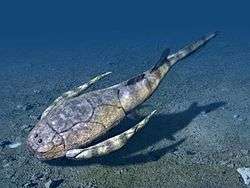Hondita Formation
The Hondita Formation (Spanish: Formación Hondita, Ksh) is a fossiliferous geological formation of the Upper Magdalena Valley (VSM) and surrounding Central and Eastern Ranges of the Colombian Andes, extending from Cundinamarca in the north to Huila and easternmost Tolima in the south. The lowermost unit of the Güagüaquí Group, a sequence of sandy limestones and shales, dates to the Late Cretaceous period; Turonian epoch, and has a maximum thickness of 90 metres (300 ft).
| Hondita Formation Stratigraphic range: Turonian ~93–90 Ma | |
|---|---|
| Type | Geological formation |
| Unit of | Güagüaquí Group |
| Underlies | Loma Gorda Formation |
| Overlies | not observed |
| Thickness | up to 90 m (300 ft) |
| Lithology | |
| Primary | Sandy limestone, shale |
| Other | Calcareous concretions |
| Location | |
| Coordinates | 4°30′47″N 74°52′32″W |
| Approximate paleocoordinates | 3.0°S 52.0°W |
| Region | Upper Magdalena Valley, Central & Eastern Ranges, Andes |
| Country | |
| Type section | |
| Named for | Quebrada Hondita |
| Named by | De Porta |
| Location | Piedras, Tolima |
| Year defined | 1966 |
| Coordinates | 4°30′47″N 74°52′32″W |
| Region | Cundinamarca, Huila, Tolima |
| Country | |
 Paleogeography of Northern South America 90 Ma, by Ron Blakey | |
Fossils of Yaguarasaurus columbianus, said to be found in the time-equivalent La Frontera Formation (listed as "La Frontera Member"), were actually recovered from the Hondita Formation as the stratigraphic unit present in the Quebradas El Ocal and Itaibe, Huila.
Etymology
The formation was named in 1966 by De Porta, named after Quebrada Hondita in Piedras, Tolima.[1]
Description
Lithologies
The Hondita Formation is characterised by a sequence of sandy limestones and shales with calcareous concretions up to 2 metres (6.6 ft) in diameter.[2] The formation has provided fossils of Acanthoceras sp., Rhynchostreon sp. near Aipe, Huila.[3]
Stratigraphy and depositional environment
The Hondita Formation is the lowermost unit of the Güagüaquí Group.[1] It is overlain by the Loma Gorda Formation and its base has not been observed. The age has been estimated on the basis of ammonites to be Turonian.[2] Stratigraphically, the formation is time equivalent with the lower parts of the Chipaque, La Luna and La Frontera Formations.[4] The formation was deposited in a relative highstand sequence with an oceanic oxygen depletion event, sharply marked in Colombia and characterised by the appearance of calcareous concretions with a thick pyrite rim.[5]
Yaguarasaurus
Fossils of Yaguarasaurus columbianus were described as coming from the "La Frontera Member", part of the "Villeta Formation", in the Quebrada El Ocal, 26 kilometres (16 mi) southwest of Neiva, Huila,[6][7] and in the Quebrada Itaibe 78 kilometres (48 mi) southwest of Neiva,[8] although in these areas the Hondita Formation is mapped.[9][10]
Outcrops

The type locality of the Hondita Formation is located in Piedras, Tolima.[1] Other outcrops of the Hondita Formation have been noted east of the Magdalena River northeast of Honda,[11] west of Nariño,[12] west across the Magdalena River in San Luis, Tolima,[13] between the Tetuán and Saldaña Rivers west of Coyaima and east and west of Ataco,[14] to the east of the Prado River reservoir,[15] north and west of Aipe,[16] surrounding Alpujarra, Tolima,[17] south of Palermo, Huila, displaced by the Baché Fault,[18] east of Iquira,[9] north of Yaguará,[10] south of La Plata where the formation is cut by the Itaibe Fault,[19] a small patch east of Gigante, Huila,[20] northwest and northeast of San Agustín,[21] and north of Timaná surrounding the Magdalena River.[22]
Regional correlations
| Age | Paleomap | VMM | Guaduas-Vélez | W Emerald Belt | Villeta anticlinal | Chiquinquirá- Arcabuco | Tunja- Duitama | Altiplano Cundiboyacense | El Cocuy | ||||
|---|---|---|---|---|---|---|---|---|---|---|---|---|---|
| Maastrichtian | 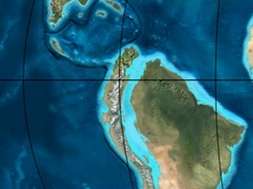 | Umir | Córdoba | Seca | eroded | Guaduas | Colón-Mito Juan | ||||||
| Umir | Guadalupe | ||||||||||||
| Campanian | Córdoba | ||||||||||||
| Oliní | |||||||||||||
| Santonian | La Luna | Cimarrona - La Tabla | La Luna | ||||||||||
| Coniacian | Oliní | Conejo | Chipaque | ||||||||||
Güagüaquí | Loma Gorda | undefined | La Frontera | ||||||||||
| Turonian |  | Hondita | La Frontera | Otanche | |||||||||
| Cenomanian | Simití | hiatus | La Corona | Simijaca | Capacho | ||||||||
| Pacho Fm. | Hiló - Pacho | Churuvita | Une | Aguardiente | |||||||||
| Albian | 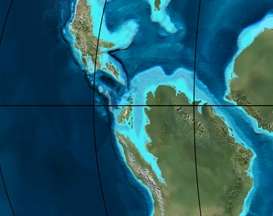 | Hiló | Chiquinquirá | Tibasosa | Une | ||||||||
| Tablazo | Tablazo | Capotes - La Palma - Simití | Simití | Tibú-Mercedes | |||||||||
| Aptian | Capotes | Socotá - El Peñón | Paja | Fómeque | |||||||||
| Paja | Paja | El Peñón | Trincheras | Río Negro | |||||||||
| La Naveta | |||||||||||||
| Barremian | 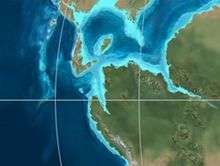 | ||||||||||||
| Hauterivian | Muzo | Cáqueza | Las Juntas | ||||||||||
| Rosablanca | Ritoque | ||||||||||||
| Valanginian | Ritoque | Furatena | Útica - Murca | Rosablanca | Girón | Macanal | |||||||
| Rosablanca | |||||||||||||
| Berriasian | 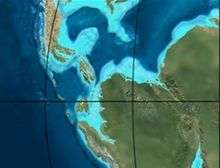 | Cumbre | Cumbre | Los Medios | Guavio | ||||||||
| Tambor | Arcabuco | Cumbre | |||||||||||
| Sources | |||||||||||||
See also
References
- Acosta & Ulloa, 2002, p.23
- Acosta & Ulloa, 2002, p.24
- Patarroyo, 2011
- Acosta & Ulloa, 2002, p.22
- Villamil, 2012, p.173
- 'Yaguarasaurus columbianus' in the Paleobiology Database
- Yaguarasaurus columbianus at Fossilworks.org
- Páramo Fonseca, 2000, p.124
- Plancha 344, 1999
- Plancha 345, 1999
- Plancha 207, 2010
- Plancha 245, 1999
- Plancha 264, 2002
- Plancha 282, 1993
- Plancha 283, 2009
- Plancha 302, 1993
- Plancha 303, 2002
- Plancha 323, 1998
- Plancha 366, 1998
- Plancha 367, 2003
- Plancha 388, 2002
- Plancha 389, 2003
Bibliography
- Acosta, Jorge E., and Carlos E. Ulloa. 2002. Mapa geológico del Departamento de Cundinamarca 1:250,000 - Memoria Explicativa, 1–108. INGEOMINAS.
- Páramo Fonseca, María Euridice. 2000. Yaguarasaurus columbianus (Reptilia, Mosasauridae), a primitive mosasaur from the Turonian (Upper Cretaceous) of Colombia. Historical Biology 14. 121-131. Accessed 2018-05-30.
- Patarroyo, Pedro. 2011. Sucesión de Amonitas del Cretácico Superior (Cenomaniano-Coniaciano) de la parte más alta de la Formación Hondita y de la Formación Loma Gorda en la Quebrada Bambucá, Aipe - Huila (Colombia). Boletín de Geología, Universidad Nacional de Colombia 33. 69–92. Accessed 2017-03-31.
- Villamil, Tomas. 2012. Chronology Relative Sea Level History and a New Sequence Stratigraphic Model for Basinal Cretaceous Facies of Colombia, 161–216. Society for Sedimentary Geology (SEPM).
Maps
- Barrero L., Darío, and Carlos J. Vesga O. 2009. Plancha 188 - La Dorada - 1:100,000, 1. INGEOMINAS. Accessed 2017-06-06.
- Barrero, Darío, and Carlos J. Vesga. 2010. Plancha 207 - Honda - 1:100,000, 1. INGEOMINAS. Accessed 2017-06-06.
- Acosta, Jorge E.; Rafael Guatame; Oscar Torres, and Frank Solano. 1999. Plancha 245 - Girardot - 1:100,000, 1. INGEOMINAS. Accessed 2017-06-06.
- Calcedo, Juan Carlos, and Roberto Terraza. 2000. Plancha 264 - Espinal - 1:100,000, 1. INGEOMINAS. Accessed 2017-06-06.
- Carvajal, Cesar; Jaime Fuquen, and Luis Gómez. 1993. Plancha 282 - Chaparral - 1:100,000, 1. INGEOMINAS. Accessed 2017-06-06.
- Cossio, Ubaldo; Gabriel Rodríguez, and Miguel Rodríguez. 1995. Plancha 283 - Purificación - 1:100,000, 1. INGEOMINAS. Accessed 2017-06-06.
- Fuquen, Jaime; Gabriel Rodríguez; Ubaldo Cossio, and Alberto Núñez. 1993. Plancha 302 - Aipe - 1:100,000, 1. INGEOMINAS. Accessed 2017-06-06.
- Acosta, Jorge; Pablo Caro; Jaime Fuquen, and José Osorno. 2002. Plancha 303 - Colombia - 1:100,000, 1. INGEOMINAS.
- Ferreira, Paulina; Alberto Núñez, and Miguel Rodríguez. 1998. Plancha 323 - Neiva - 1:100,000, 1. INGEOMINAS. Accessed 2017-06-06.
- Marquínez, Germán; C. Morales, and Alberto Núñez. 1999. Plancha 344 - Tesalia - 1:100,000, 1. INGEOMINAS. Accessed 2017-06-06.
- Velandia, F.; C.J. Morales; J.C. Caicedo, and Alberto Núñez. 1999. Plancha 345 - Campoalegre - 1:100,000, 1. INGEOMINAS. Accessed 2017-06-06.
- Marquínez, Germán; Yohana Rodríguez; Roberto Terraza, and Mario Martínez. 2003. Plancha 365 - Coconuco - 1:100,000, 1. INGEOMINAS. Accessed 2017-06-06.
- Rodríguez, Gabriel; Paulina Ferreira; Francisco Velandia, and Alberto Núñez. 1998. Plancha 366 - Garzón - 1:100,000, 1. INGEOMINAS. Accessed 2017-06-06.
- Rodríguez, Gabriel; Gilberto Zapata, and M. Velázquez. 2003. Plancha 367 - Gigante - 1:100,000, 1. INGEOMINAS. Accessed 2017-06-06.
- Cárdenas, Jorge; Jaime Fuquen, and Alberto Núñez. 2002. Plancha 388 - Pitalito - 1:100,000, 1. INGEOMINAS. Accessed 2017-06-06.
- Rodríguez, Gabriel; Gilberto Zapata, and M. Velázquez. 2003. Plancha 389 - Timaná - 1:100,000, 1. INGEOMINAS. Accessed 2017-06-06.
External links
- Gómez, J.; N.E. Montes; Á. Nivia, and H. Diederix. 2015. Plancha 5-09 del Atlas Geológico de Colombia 2015 – escala 1:500,000, 1. Servicio Geológico Colombiano. Accessed 2017-03-16.

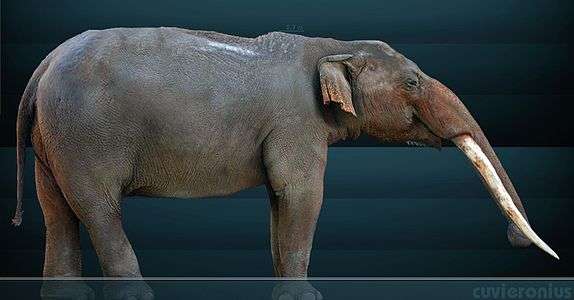
.jpg)
